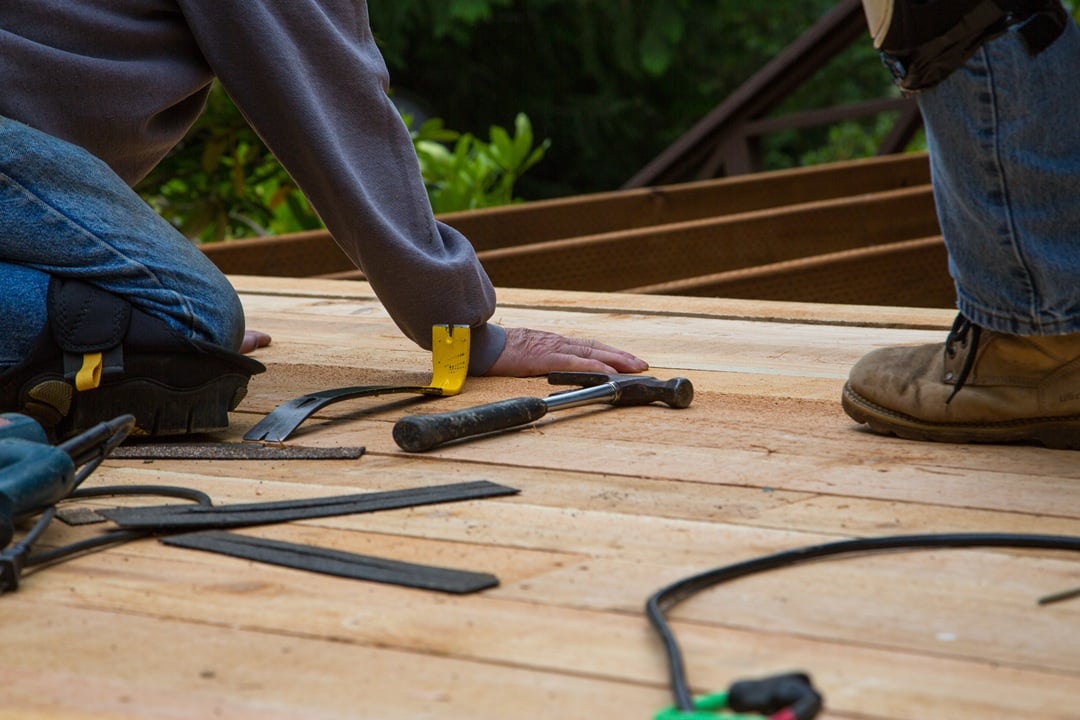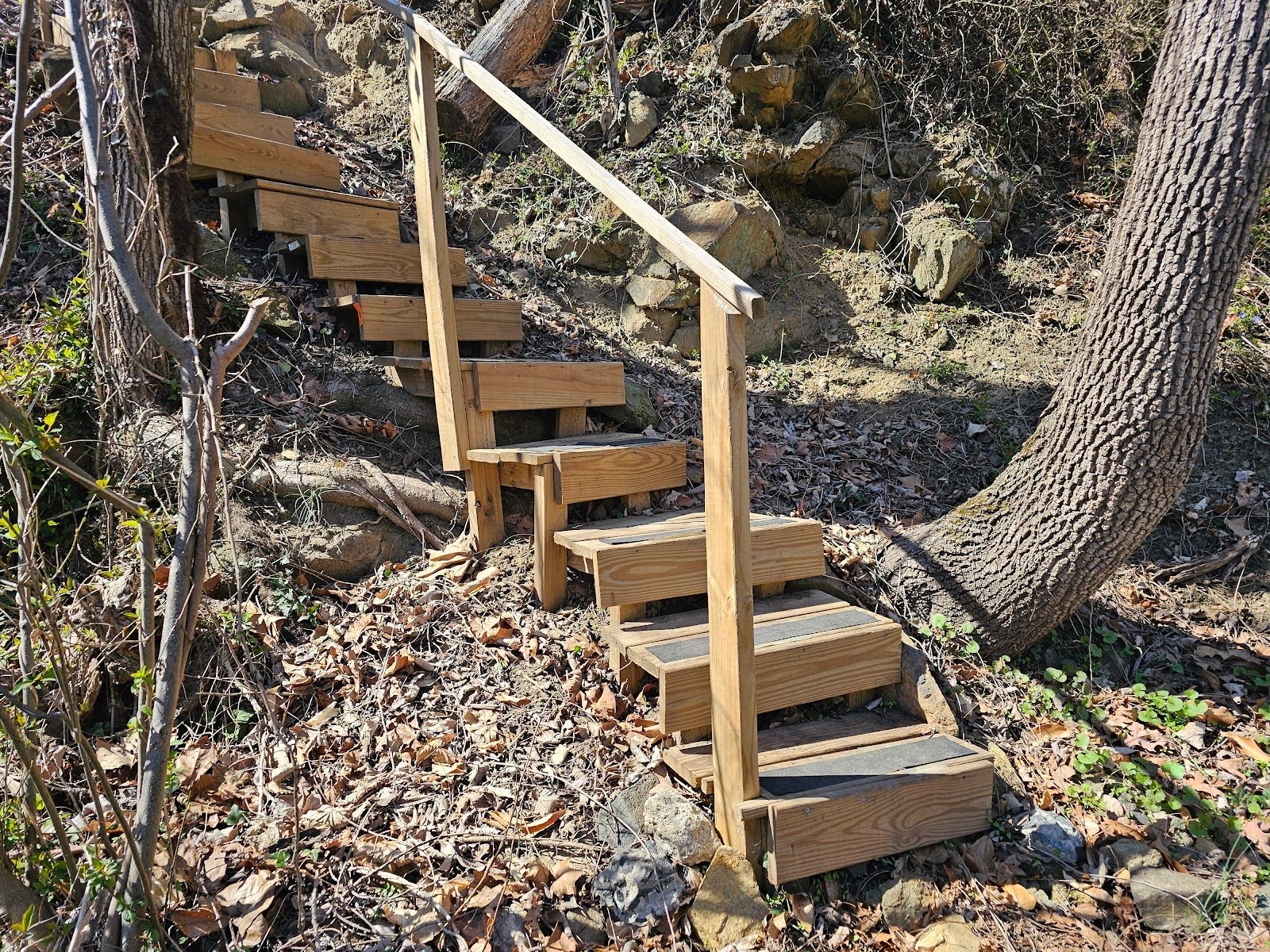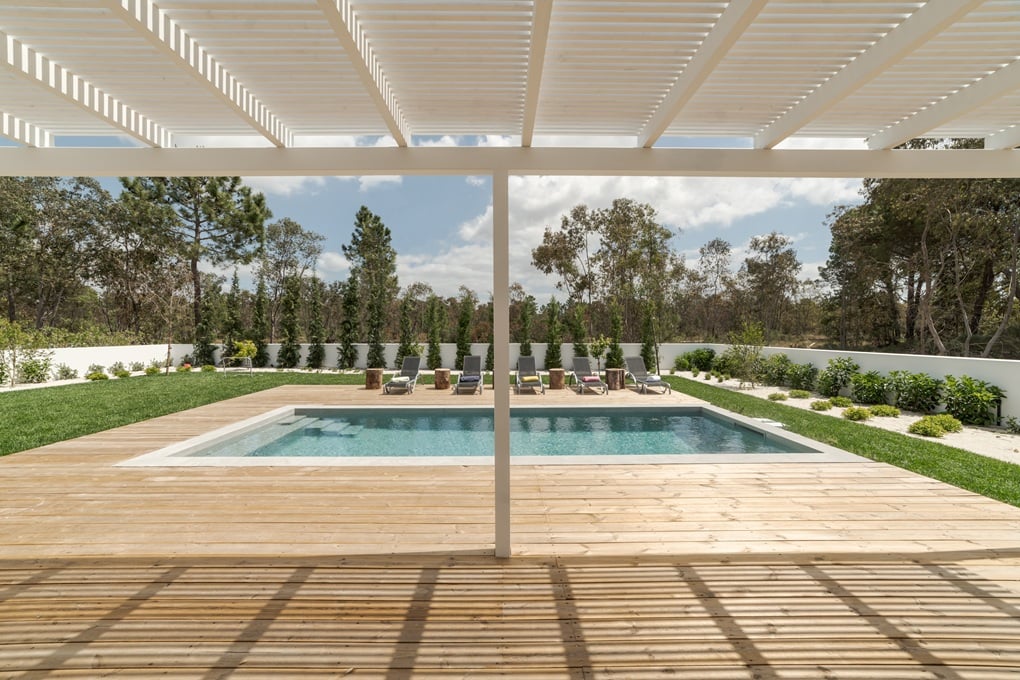Shouldered Post: Ensuring Strong Girder Support
Recently, while in the neighborhood we happened to take a look at a deck built by other contractors or homeowners. We thought it might be a good idea to use this particular example as a demonstration or illustration. Looking at the photos here today, we can show some of the details of this construction and compare it to better practices.
The building code sets minimum standards for building decks here in Washington DC, but it doesn’t cover everything. The examples we are looking at today, in some cases, are examples of things that are wrong. It may help to look at these things because they show things that can be built better. We also describe some of the other elements of building, just so our clients and audience can learn more about deck construction.
The picture below shows a 4×4 deck post with a notch cut into the top of the post. A girder is set partially into the notch created into that post. Notching the top of a post like this is called shouldering. The building code requires shouldering or a similar type of structural tie connection at the top of most post connections like this. It is particularly i.portant where the post is supporting the deck beyond or outside of the ledger at the back of the building.
In this particular case though, may be in an attempt to save materials, the builder cut the notch shorter than the height of the girder. That is a less stable connection than the ideal joinery. In almost all cases, the notch or shoulder set into the top of the post should run to the full height of the girder.

Carriage bolts were used to connect the top of the post through and to the girder, but these two bolts were set side by side instead of one above the other. Since the top of the notch area was cut short, there’s less space than would be optimal. Therefore there’s insufficient space to set the bolts in a vertical orientation, one on top of the other.

The bolts are left running long beyond the face of the girder and that isn’t necessarily a defect. In most cases though, we would recommend cutting the bolts back closer to the face of the post for practical reasons. Having a bit of extra thread length allows for a margin of error. It also allows a little bit of space at the end of the boat for the nut to secure to in excess of what’s required but for convenience to secure the nut properly.

The particular structure of this deck, for support below the deck, has two posts. The picture below shows the other post. Here this post is also cut short at the notch area, below the top of the girder. If you look closely, you can also see that this particular post happens to be cracked at the bottom of the notch area. A reasonable amount of cracking or checking in pressure treated lumber is normal and acceptable, but here, the crack is concerning because its coincidence with the pit or inner angle of the notch.

Even with the problems described above, some of the other elements of the deck look acceptable. For example, here you can see that they have installed hurricane clips at most locations where the perpendicular main floor joist of the deck run across the girder.

And even though this almost looks acceptable, as shown above, if you look at the next picture below you can see an area where they omitted hurricane clips. This happens to be coincident with the area near the point connection of the stairway. Even though the stairway connects to a rim joist on the other side of this girder, there should still be hurricane clips or structural connectors at this area.

On the outer rear side of the deck, an additional extension of the deck has been added, sistered to the original rim joist.

The next picture below shows the underside of the two joists, the old one to the right and the newer one to the left.

A portion of this backyard deck, as you can see from the underside of the framing below, is an extension of the interior floor deck. At the upper levels of the house the interior floor deck essentially cantilevers out beyond a portion of the main house’s foundation.

You can see the built-out portion in the next picture below, the bump out at the rear sits above and open area below.

Use a contractor who understands and cares about doing things right. Always, feel free to reach out to us here at Dupont Decks and Patios. We are happy to help with almost all steps of the deck building and design process. A backyard and outdoor space should make a significant, positive impact on both quality of life and home value. We can help with more than just decks, we also build patios, pergolas, ramadas, awnings, gazebos, arbors, and privacy fences.
Let us know about your ideas and talk to us if you have questions about possibilities. We are happy to participate in improving your outdoor space and quality of life! You can call us at (202) 774-9128. You can find us online at https://dupontdeckspatiosdc.com and you can email us there as well at https://dupontdeckspatiosdc.com/contact-us




